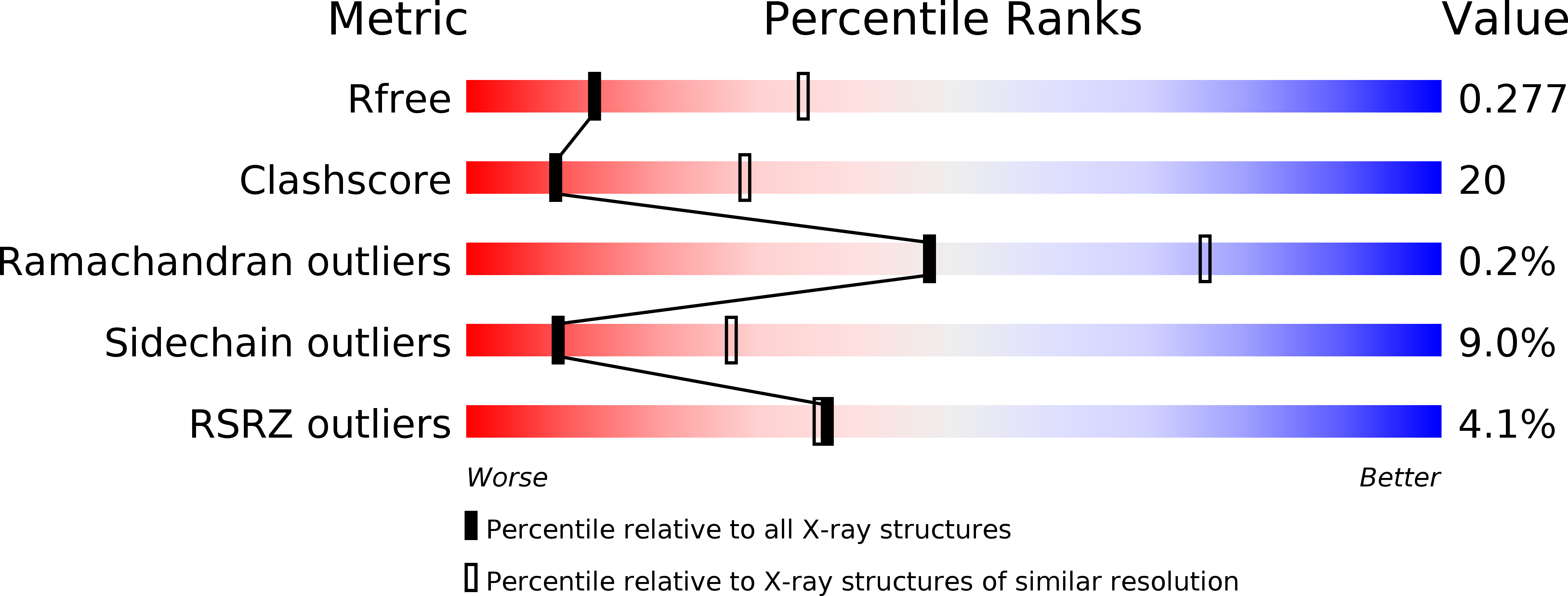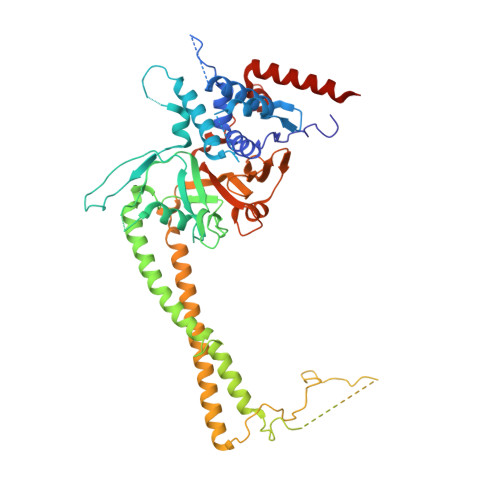Distinct USP25 and USP28 Oligomerization States Regulate Deubiquitinating Activity.
Gersch, M., Wagstaff, J.L., Toms, A.V., Graves, B., Freund, S.M.V., Komander, D.(2019) Mol Cell 74: 436
- PubMed: 30926242
- DOI: https://doi.org/10.1016/j.molcel.2019.02.030
- Primary Citation of Related Structures:
6HEH, 6HEI, 6HEJ, 6HEK, 6HEL, 6HEM - PubMed Abstract:
The evolutionarily related deubiquitinating enzymes (DUBs) USP25 and USP28 comprise an identical overall domain architecture but are functionally non-redundant: USP28 stabilizes c-MYC and other nuclear proteins, and USP25 regulates inflammatory TRAF signaling. We here compare molecular features of USP25 and USP28. Active enzymes form distinctively shaped dimers, with a dimerizing insertion spatially separating independently active catalytic domains. In USP25, but not USP28, two dimers can form an autoinhibited tetramer, where a USP25-specific, conserved insertion sequence blocks ubiquitin binding. In full-length enzymes, a C-terminal domain with a previously unknown fold has no impact on oligomerization, but N-terminal regions affect the dimer-tetramer equilibrium in vitro. We confirm oligomeric states of USP25 and USP28 in cells and show that modulating oligomerization affects substrate stabilization in accordance with in vitro activity data. Our work highlights how regions outside of the catalytic domain enable a conceptually intriguing interplay of DUB oligomerization and activity.
Organizational Affiliation:
Medical Research Council Laboratory of Molecular Biology, Francis Crick Avenue, Cambridge CB2 0QH, UK; Chemical Genomics Centre, Max-Planck-Institute of Molecular Physiology, Otto-Hahn-Str. 11, 44227 Dortmund, Germany; Department of Chemistry and Chemical Biology, Technical University Dortmund, Otto-Hahn-Str. 4a, 44227 Dortmund, Germany.


















